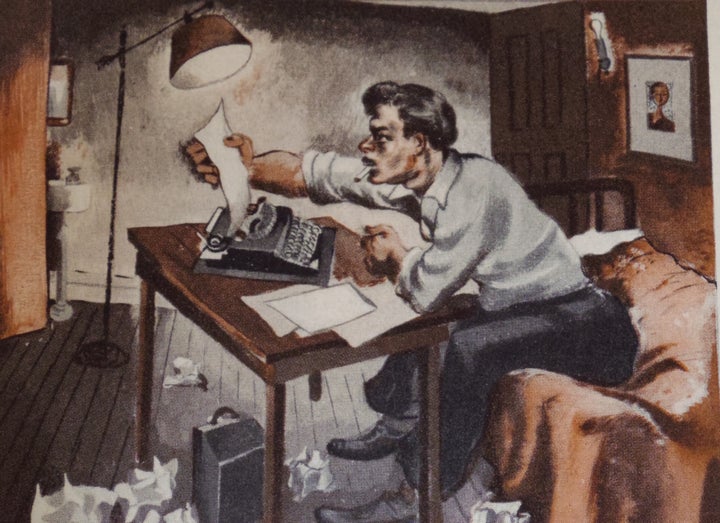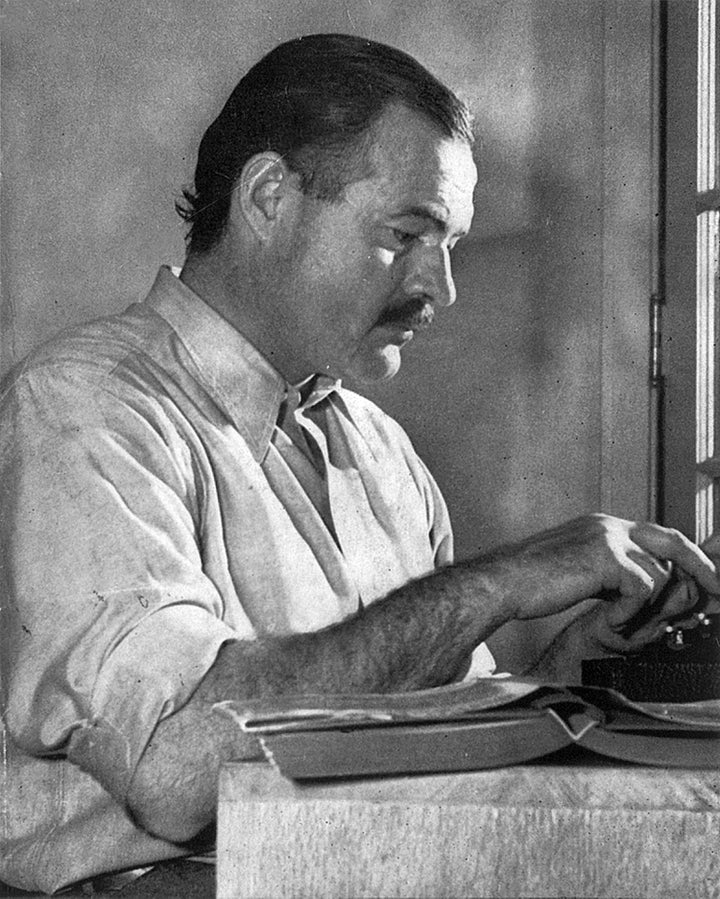
Finnegan in full flow
In January 1938, Esquire published F. Scott Fitzgerald’s short story “Financing Finnegan.” It is about a writer, and the processes of both writing and publication. Finnegan, who shares a literary agent and a publisher with the narrator, is a “distinguished author” and the narrator a rather Nick-Carrawayesque observer on his way to selling his writing talents in Hollywood. As is often the case with Fitzgerald, he uses himself for the stuff of his characters: there is, as critics have noted, much Fitzgerald in Finnegan. As is also often the case with Fitzgerald, he got there first himself. In a 1939 letter to his agent Harold Ober, he refers to “the semi-crippled state into which I get myself sometimes (almost like the hero of my story ‘Financing Finnegan’)[.]”
Finnegan is not only a writer, but a literary celebrity, and the paragraph in which Fitzgerald describes the arc of his career is a very funny, self-aware song of self, parodying language from past reviews of his own writing.
“His was indeed a name with ingots in it. His career had started brilliantly and if it had not kept up to its first exalted level, at lease it started brilliantly over again every few years. He was the perennial man of promise in American letters — what he could actually do with words was astounding, they glowed and coruscated — he wrote sentences, paragraphs, chapters that were masterpieces of fine weaving and spinning.”
One of the only problems with Finnegan’s work is that — like Fitzgerald’s — it is very difficult to film. Hollywood wants Finnegan’s fictions, and wants them desperately, for the booming movie trade. But screenwriters hate him: “It was only when I met some poor devil of a screen writer who had been trying to make a logical story out of one of his books that I realized he had his enemies. ‘It’s all beautiful when you read it,’ this man said disgustedly, ‘but when you write it down plain it’s like a week in the nut-house.’”
When the narrator arrives at his Fifth Avenue publisher’s office for lunch, Mr. George Jaggers (a fictionalized version of the great Scribner’s editor Max Perkins) only wants to talk about Finnegan. And, at this point, the narrator discovers the problem with Finnegan himself: he’s flat broke. His literary agent and publisher are both financing Finnegan.
By 1938, Fitzgerald himself had sent many telegrams, from Baltimore, from North Carolina, asking Ober, and Perkins, for money. Coolly as ice, he near replicates those despairing telegrams in the story. The younger writer reads a request for “fifty” and thinks Finnegan is asking for a $50,000.00 advance for his next novel; what Finnegan is asking for is fifty bucks, so he can pay his typist and get a haircut and pencils. Jaggers confesses that he gives “up a suit and a pair of shoes” to send Finnegan money from his own pocket; eavesdropping in their agent’s office, the narrator learns that the agent, Mr. Cannon, too, is supplying funds.
Finnegan is not getting published because of a “run of hard luck” including a badly broken arm gotten while trying to impress women at a swimming pool (Fitzgerald sustained same in a parallel incident in the summer of 1936). However, the stories he is sending to Cannon are canonically pure Finnegan: “It was a short story. I began in a mood of disgust but before I’d read five minutes I was completely immersed in it, utterly charmed, utterly convinced and wishing to God I could write like that....Any magazine in the country would have run it first in any issue. But then nobody had ever denied that Finnegan could write.”
Section III of the story begins to show a somewhat different Finnegan. He is off to the North Pole with three anthropologists from Bryn Mawr, which has “the ring of a promising little house party about it[.]” The expedition into the wild is complicated by a snowstorm, a hunter’s quest for food, and much else; do read the story and I wouldn’t dream of spoiling the ending.
Finnegan’s likeness to Ernest Hemingway is not even remotely apparent until one begins section III. Remember, then, that Fitzgerald was the one who brought Hemingway to his own publisher (Hemingway had no agent). In October 1924, he wrote to Perkins “to tell you about a young man [three years Fitzgerald’s junior] named Ernest Hemmingway, who lives in Paris, (an American) writes for the Transatlantic Review + has a brilliant future.... I’d look him up right away. He’s the real thing.” Perkins accepted The Sun Also Rises after Hemingway undertook Fitzgerald’s crucial and substantial revisions (including scrapping the “elephantine facetiousness” of the first chapter, and starting with Robert Cohn and boxing at Princeton). As late as 1932, Fitzgerald was still the better-known writer of the two, solicitous about Hemingway with their mutual publisher, cautioning Perkins, “Ernest once told me he would ‘never publish a book in the same season with me.’” By 1936, Hemingway’s star had risen with the success of A Farewell To Arms (and the movie based on the book), and he mocked his friend and longtime champion in “The Snows of Kilimanjaro.” Fitzgerald had to write to him, “Dear Ernest: Please lay off me in print,” while with remarkable moderation praising the story as “one of your best.” Fitzgerald didn’t hold the grudge, and was nice, if also realistic, about Hemingway for the rest of his life, a favor Hemingway most certainly did not return after Fitzgerald’s death.
Arnold Gingrich, Esquire’s editor since its beginning 1933, was a friend of both Fitzgerald’s and Hemingway’s. He fished with Hemingway in Key West (Fitzgerald was meant to join them in December 1934, but couldn’t leave Baltimore), and published Fitzgerald’s Crack-Up essays and the Pat Hobby stories. A novelist himself (check out Cast Down The Laurel, 1935), Gingrich knew not only their writing, but both men, well. The original illustration Gingrich chose to print along with “Financing Finnegan” is at the top of this essay: a burly brunet with a smallish walrus mustache, doing his own typing on a portable journalist’s typewriter. Now read the story for yourselves — and decide whether or not you think Gingrich noticed a building, amused, and amusing resemblance to Hem by the end of the story.

Hemingway at work, late 1939
